Sponsorship ROI Analysis: Strategies, Metrics & Valuation
Updated On: November 20, 2025 by Aaron Connolly
Understanding Sponsorship ROI
Sponsorship ROI tells us how much financial return brands actually get from their esports partnership investments. To track if sponsorships really drive business goals, we have to start with clear definitions and objectives.
Definition of Sponsorship ROI
Sponsorship ROI basically compares the value gained from esports partnerships to the money spent. The formula’s simple: just divide the total value generated by the sponsorship cost, then multiply by 100 to get a percentage.
The industry usually aims for a 4:1 ROI. So, for every pound spent, sponsors want four pounds back. But ROI isn’t just about immediate sales.
Modern sponsorship effectiveness goes deeper, mixing hard numbers with softer stuff. Hard metrics look at direct revenue, website visits, and social engagement. Soft metrics focus on brand perception, fan loyalty, and whether new customers stick around.
We usually track things like:
- Direct sales from sponsorship campaigns
- Customer lifetime value from new fans
- Brand awareness lifts
- Social media reach and engagement
- Media coverage value
A lot of esports organisations still struggle with measurement. Only about 19% of sponsorship pros feel sure they can measure sponsorship success the right way. That gap makes it even more important to nail down what ROI means.
Purpose and Objectives of ROI Analysis
ROI analysis does a few key things for esports sponsorships. It justifies investments to stakeholders or finance teams. It guides which partnerships to chase next. And it helps us tweak ongoing campaigns for better results.
We use ROI analysis to line up sponsorship activities with bigger business goals. Whether we’re after brand awareness, leads, or straight-up sales, ROI keeps us focused.
Main objectives?
- Budget allocation – figuring out which tournaments or teams deserve more spend
- Partnership evaluation – comparing returns from different esports properties
- Campaign optimisation – making changes on the fly based on performance data
- Strategic planning – setting real-world goals for future sponsorships
The esports sponsorship market hit £42 billion in 2020 and is expected to reach £66 billion by 2027. With that kind of growth, brands need a solid way to measure their share.
ROI analysis also stops us from falling into the old trap of focusing only on logo visibility or basic impressions. We really need metrics that connect sponsorships to real business outcomes and changes in fan behaviour.
Key Metrics for Sponsorship ROI
Measuring sponsorship success means tracking data that actually shows business impact. Brands now want metrics that link sponsorship spending with outcomes like sales growth or brand recognition.
Impressions and CPM
Impressions count how many times people see your brand during sponsored events. That could be logos on jerseys, signs in arenas, or mentions on broadcasts.
Cost per mille (CPM) figures out what you pay for every 1,000 impressions. Just take your sponsorship cost, divide by impressions, and multiply by 1,000.
| Sponsorship Type | Average CPM Range |
|---|---|
| Stadium signage | £2-£8 |
| Jersey placement | £5-£15 |
| Event naming rights | £10-£25 |
Digital impressions are way easier to track than old-school ones. Stream overlays and social posts give you exact numbers.
But here’s the thing: impressions alone don’t tell you if anyone noticed your brand. Big numbers mean little if viewers tune you out.
So use impressions as a starting point, not your only metric. Always check your CPM against industry averages to see if you’re actually getting value.
Brand Awareness Measurement
Brand awareness is all about whether people remember your company after the sponsorship. This connects straight to long-term growth.
Brand lift studies compare awareness before and during sponsorships. Survey your audience each month to see if brand recognition is moving.
We usually look at three types of awareness:
- Aided awareness: People pick your brand from a list
- Unaided awareness: People name your brand without help
- Brand association: People link your brand to certain qualities
Quick tip: Run online polls after big sponsored events. Ask, “Which brands do you remember from last weekend’s tournament?”
Keep tabs on sentiment too. Positive mentions matter more than just the total number.
Social listening tools help track what people say about your brand. Watch for more positive mentions during events.
Set targets for awareness before campaigns start. A 5-10% bump in aided awareness is a realistic goal for most.
Audience Engagement Indicators
Engagement tells you if people actually interact with your sponsored content. Real engagement leads to stronger brand relationships than just passive views.
Social media engagement covers likes, shares, comments, and saves. To get the engagement rate, divide total interactions by impressions.
| Platform | Good Engagement Rate |
|---|---|
| 0.5-1% | |
| 1-3% | |
| TikTok | 3-9% |
Event participation tracks how many people visit your booth, enter contests, or try product demos at venues.
Website traffic from sponsorships shows real interest. Use trackable links or promo codes to see direct referrals.
Focus on quality, not just numbers. Meaningful comments or shares mean more than a bunch of likes.
Compare engagement rates across different sponsorships to see what your audience actually likes.
Lead Generation Metrics
Lead generation shows how many potential customers you get from sponsorships. These metrics link spending to sales opportunities.
Qualified leads are people who fit your target and show real interest. Quality always beats quantity here.
Track where leads come from to spot top performers:
- Contest sign-ups
- Newsletter subscriptions
- Product demo requests
- Sales enquiries
Conversion tracking follows leads through your sales funnel. Count how many sponsorship leads turn into real customers.
Cost per lead (CPL) tells you how efficient your sponsorship is. Divide sponsorship cost by qualified leads. Compare it to your other marketing channels.
Use unique landing pages for each campaign. That makes tracking cleaner and helps with user experience.
Quick tip: Offer exclusive discounts at events. Track how many people redeem them to see direct sales impact.
Set up lead scoring before campaigns go live. That way, sales teams can prioritise the best prospects from sponsorships.
Valuation Techniques and Methodologies
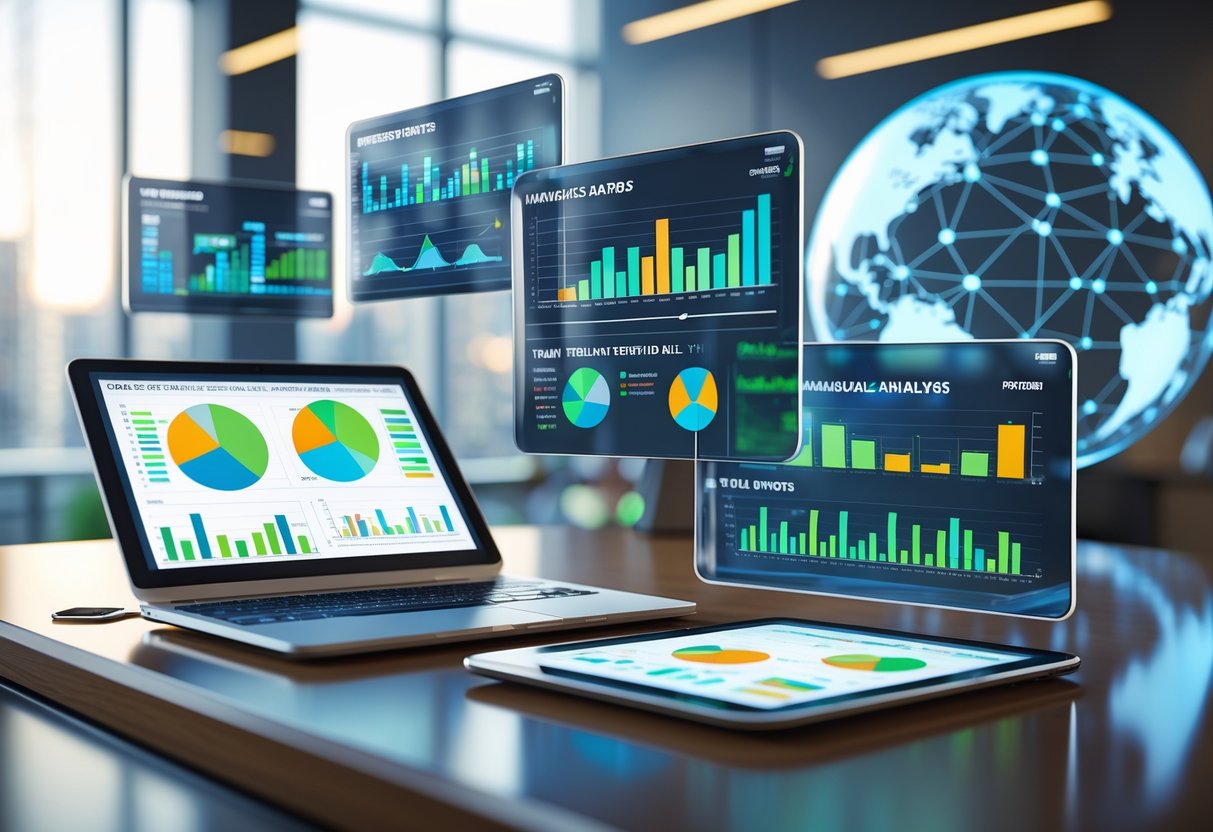
If you want to value sponsorships properly, you need structured methods that turn brand exposure into financial returns. Let’s go through three core ways to quantify sponsorship investment and build sponsorship packages that actually make sense.
Sponsorship Valuation Frameworks
Valuation frameworks lay the groundwork for measuring ROI. They connect brand exposure to business results using standard metrics.
Media Equivalency Models work out what it would cost to buy the same exposure as advertising. In esports, that might mean comparing a stream overlay to a TV ad. But this method often misses the extra value from audience engagement.
Brand Equity Frameworks track changes in brand awareness, perception, and purchase intent. These models look at long-term brand value, not just short-term exposure.
Integrated Valuation Systems mix up data from several sources:
- Social media metrics and engagement rates
- Website traffic and conversions
- Sales from sponsored events
- Brand lift studies and surveys
The best frameworks match up with your business goals. If you’re new to esports, you might care more about awareness. Established brands usually focus on conversion and retention.
Top-Down and Bottom-Up Approaches
Top-down valuation starts with the total sponsorship investment and then works backwards to show value. This suits big partnerships where the overall impact matters more than each asset.
For instance, a £100,000 tournament sponsorship might bring in £300,000 worth of media value based on views and engagement. That 3:1 ratio helps justify the spend.
Bottom-up approaches value each asset in the package separately. Every element gets its own analysis:
| Asset Type | Valuation Method | Typical Value Range |
|---|---|---|
| Logo placement | CPM x impressions | £0.50-£5 per 1,000 views |
| Social mentions | Engagement rate x reach | £2-£15 per interaction |
| Product integration | Sales attribution | 5-20% of driven revenue |
Bottom-up gives you detailed insights for future sponsorships. It shows which assets perform best and where to invest more.
Asset-Based Valuation
Asset-based valuation treats every sponsorship element as its own investment. This works well for complex esports deals with lots of touchpoints.
Tangible assets include things like logos, naming rights, and physical activations. You can calculate their value using media equivalency based on how many people see them and for how long.
Intangible assets—like access to the audience or data insights—take a bit more effort to measure. Player testimonials, content collabs, and community engagement can actually deliver the most value over time.
Digital assets are king in esports. Stream overlays, social takeovers, and influencer partnerships need special metrics:
- Click-through rates to sponsor sites
- Hashtag usage and viral spread
- Audience sentiment during sponsored content
Asset valuation helps sponsors see which parts of a package are worth it. Rights holders can also price each element better and pitch more targeted proposals.
Evaluating Brand Impact
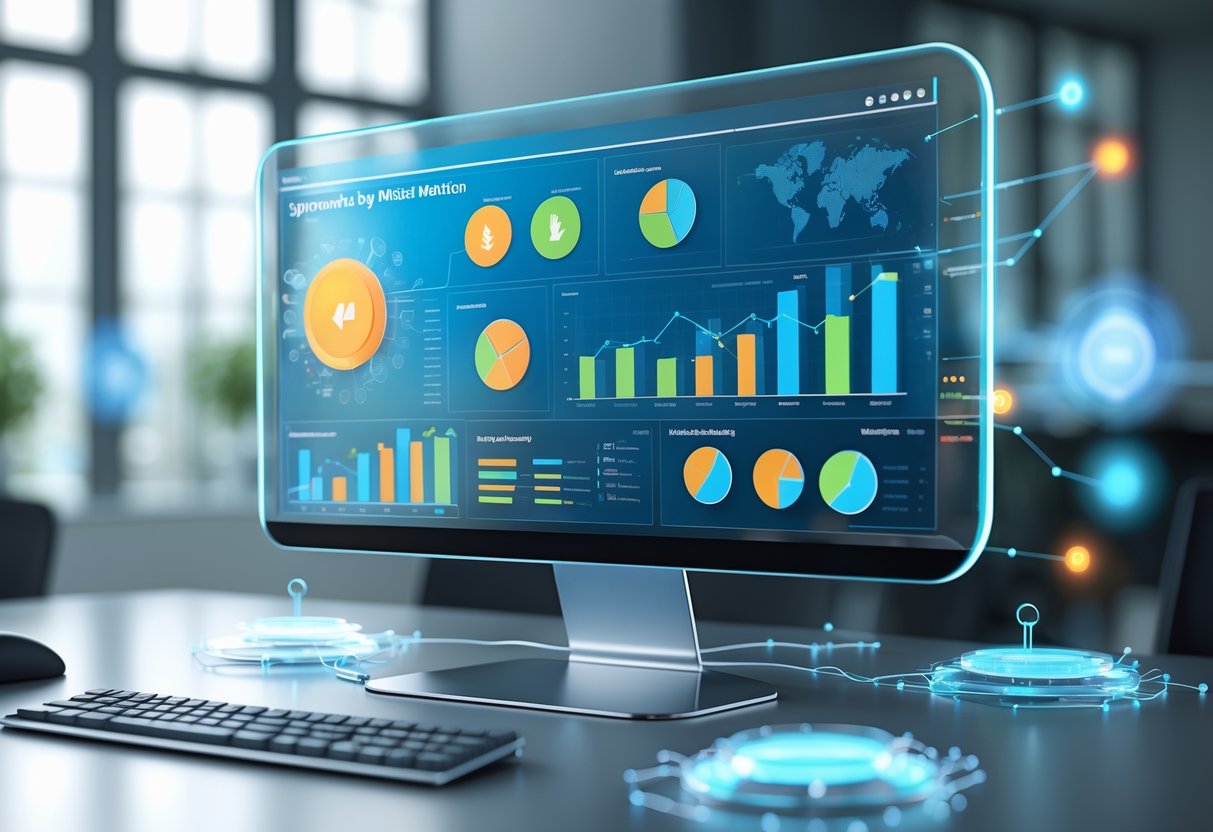
Measuring brand impact goes beyond surface-level stats. We need to see how sponsorships change audience perceptions and awareness. The best insights come from tracking visibility, recall, and brand lift across your target audience.
Brand Visibility Enhancement
Brand visibility checks how often and where people see your brand during sponsored events. This covers logos, mentions, and visual exposure on all sorts of channels.
Direct visibility comes from planned things like jersey logos, arena signs, or broadcast graphics. These guarantee impressions during live events.
Organic visibility happens when fans share your brand in their own content. Social posts, livestream clips, and user-generated stuff can stretch your reach way beyond the event itself.
We use share of voice analysis to measure visibility. This compares how often your brand gets mentioned versus competitors. For example, a football sponsor might count logo appearances in match highlights compared to rivals.
Key metrics to watch:
- Total impression count
- Reach across platforms (TV, social, streaming)
- Logo visibility time in broadcasts
- How often commentators mention you
When sponsorships hit home with fans, brands often get 3-5x more organic visibility than they paid for.
Brand Recall and Perception
Brand recall checks if people actually remember your brand after seeing it. This tells you if your sponsorship stands out from the crowd.
Unaided recall asks people to name brands from memory—no hints. “Which brands sponsored the tournament you watched?” Good sponsorships hit 15-25% unaided recall.
Aided recall gives a little help, like “Which energy drink brands do you remember?” Scores here usually run 40-60% higher than unaided.
Perception tracking looks at how sponsorships shift brand attributes. Gaming gear brands often see boosts in “innovative” or “gamer-friendly” perception after esports sponsorships.
We recommend surveying before, during, and after sponsorships. Pre-event surveys set the baseline. Mid-event tracking shows immediate impact. Post-event research reveals what sticks.
Brand perception shifts usually include:
- Relevance to gaming communities
- Innovation and tech leadership
- Understanding of youth culture
- Authenticity in esports
Measuring Brand Lift
Brand lift shows the percentage increase in key brand metrics that your sponsorship actually drives. You can finally connect your spend to real business outcomes—no more guessing.
Awareness lift checks how well people recognize your brand before and after a campaign. Esports sponsorships often spark 8-15% jumps in awareness among the target crowd.
Purchase intent lift captures shifts in whether people consider buying. Energy drink brands, for example, usually see 10-20% bumps in intent after sponsoring big tournaments.
We run control group tests to calculate lift. We show sponsorship content to half the audience, while the other half sees nothing. The difference tells us the real impact.
Brand lift measurement tools:
- Surveys to gauge awareness and perception
- Search volume checks for interest spikes
- Website traffic analysis for engagement
- Sales data matched to campaign timing
Gaming brands usually see higher lift rates (12-18%) than traditional sports sponsors (6-10%). That’s likely thanks to a more aligned, engaged audience.
Heads up: Brand lift takes 3-6 months to settle in. If you measure too soon, you’ll probably miss the long-term effects.
Audience and Demographic Insights
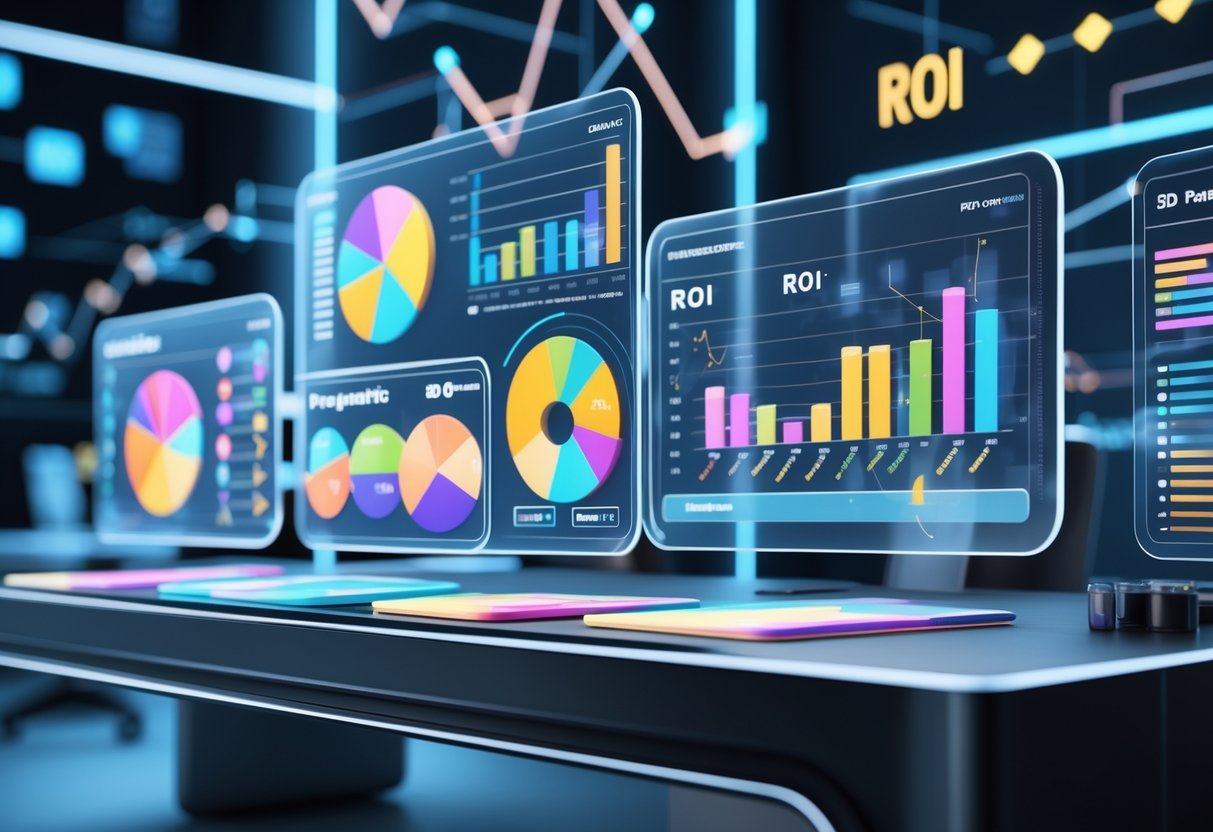
If you don’t know who’s watching or engaging with your sponsored content, how can you measure real impact? Demographics tell you who’s there; consumer behaviour shows how they react.
Analysing Demographics
Demographics lay the groundwork for understanding your sponsorship audience. Start by tracking age, location, gender, and income of those interacting with your sponsored content.
Most esports audiences skew younger than traditional sports fans. The sweet spot is 16-34 years old—about 65% male, 35% female. Of course, these numbers swing wildly from game to game.
League of Legends tends to bring in a slightly older crowd (25-35), while Fortnite draws in the younger bunch (16-24). Geography matters too—UK fans don’t always act like US or Asian audiences.
Key demographic metrics to track:
- Age split by game
- Regional engagement
- Device choice (mobile, PC, console)
- Viewing times and session lengths
You can use Google Analytics or platform insights to get this data. These days, most esports platforms break down demographics for sponsored content.
Compare your sponsorship audience demographics to your ideal customer base. The closer the match, the better your ROI prospects.
Consumer Behaviour Patterns
Demographics tell you who’s watching, but behaviour reveals what they do. Track how your audience interacts with sponsored content versus organic posts.
Esports fans don’t act like traditional sports viewers. They’re more likely to join live streams, share content fast, and buy based on influencer recommendations.
Key behaviour metrics:
- Click-through rates on sponsored posts
- Time spent watching branded segments
- Social media engagement
- Purchases after exposure
Gaming fans often buy later, not right away. Someone might spot your brand during a tournament but wait weeks to buy. Set attribution windows to 30-60 days, not just immediate sales.
Watch for cross-platform journeys. A viewer might find you on Twitch, research you on YouTube, and finally buy through your website. UTM codes and pixel tracking help map these paths.
Try out different content formats with the same audience. Video sponsorships usually drive more engagement than static banners, but costs can vary a lot.
Digital and Web Traffic Analysis

Digital metrics give us hard numbers on how sponsorships drive online activity and engagement. We track website visits, social media buzz, and user behaviour to see what’s really working.
Monitoring Website Traffic
Website analytics show exactly how sponsorships affect online visitors. We watch for traffic spikes during and after sponsored events to measure immediate impact.
Web analytics tools track page views, unique visitors, and session time. We also check where people come from—social links, direct search, or referrals.
Traffic spikes often hit during live events or campaign launches. But honestly, quality matters more than just big numbers.
Key metrics:
- Bounce rate—are people leaving right away?
- Pages per session—are they exploring?
- Conversion rate—are they doing what we want?
- Time on site—are they sticking around?
We use Google Analytics to set up campaign tracking. This shows which sponsorships drive the most valuable traffic and engagement.
Social Media and Online Engagement
Social media stats reveal how people interact with sponsored content across platforms. We measure engagement, reach, and trends to get a sense of campaign effectiveness.
Engagement tracking isn’t just about follower counts. We watch likes, shares, comments, and saves to see if people really care. High engagement usually means a stronger emotional connection.
Platform-specific metrics help us spot where our audience hangs out:
- Instagram: Story views, saves, shares
- Twitter: Retweets, mentions, hashtags
- TikTok: Video completions, user-generated content
- LinkedIn: Professional engagement, leads
We track sentiment analysis to see how people actually feel about our sponsorship. Positive mentions and good vibes mean we’re building trust.
User-generated content is a big win. When fans create their own stuff featuring our brand, it shows real connection and spreads our reach naturally.
Event-Specific ROI Assessment
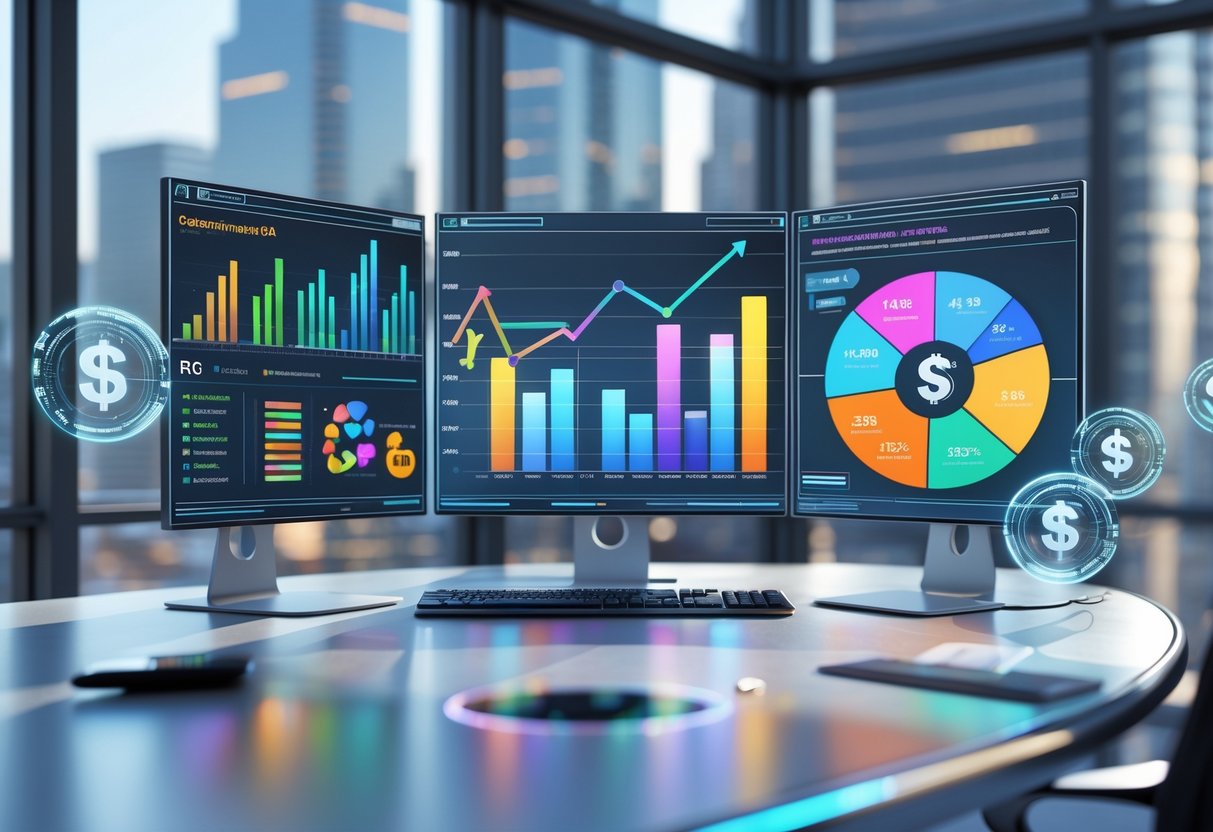
Each event type needs its own measurement approach to capture real value. We track specific metrics for every event and see how contests and activations drive engagement.
Event ROI Metrics
Every event is different. Gaming tournaments don’t need the same tracking as trade shows or meetups.
Digital Events focus on online engagement. We track stream viewers, chat activity, and social mentions during live broadcasts. Click-throughs and web traffic spikes show instant impact.
Live Events need physical engagement metrics. We count booth visits, demos, and face-to-face chats. Business cards collected and how long people stick around tell us a lot.
Hybrid Events blend both. We measure online and in-person participation for the full picture.
| Event Type | Primary Metrics | Secondary Metrics |
|---|---|---|
| Digital | Stream views, chat engagement | Website traffic, social shares |
| Live | Booth visits, lead collection | Brand recall surveys |
| Hybrid | Combined digital/physical | Cross-platform engagement |
Revenue Attribution is key for event ROI. We track sales during the event and up to 90 days later. Many people buy weeks after discovering us at an event.
Contests and Activations
Contests get people involved right away and create measurable touchpoints. Gaming contests especially hit home with esports fans and spark real brand interaction.
Participation Rates show how attractive our activations are. We measure sign-ups, completions, and sharing. Tournament-style contests usually see more action than simple giveaways.
Data Collection from contests gives us audience insights. Registration forms capture contact info and preferences. We check which prizes pull in our ideal customers.
Social Amplification spreads contest reach far beyond direct participants. We track hashtags, user-made content, and organic shares. Gaming communities love sharing results and highlights.
Lead Quality changes with activation type. Skill-based contests pull in serious gamers; prize draws grab a wider net. We score leads based on how involved they were and their buying intent.
After contests end, we keep an eye on ongoing engagement. How many participants follow our channels or join the community afterward? That’s where we see lasting impact.
Customer Feedback and Satisfaction
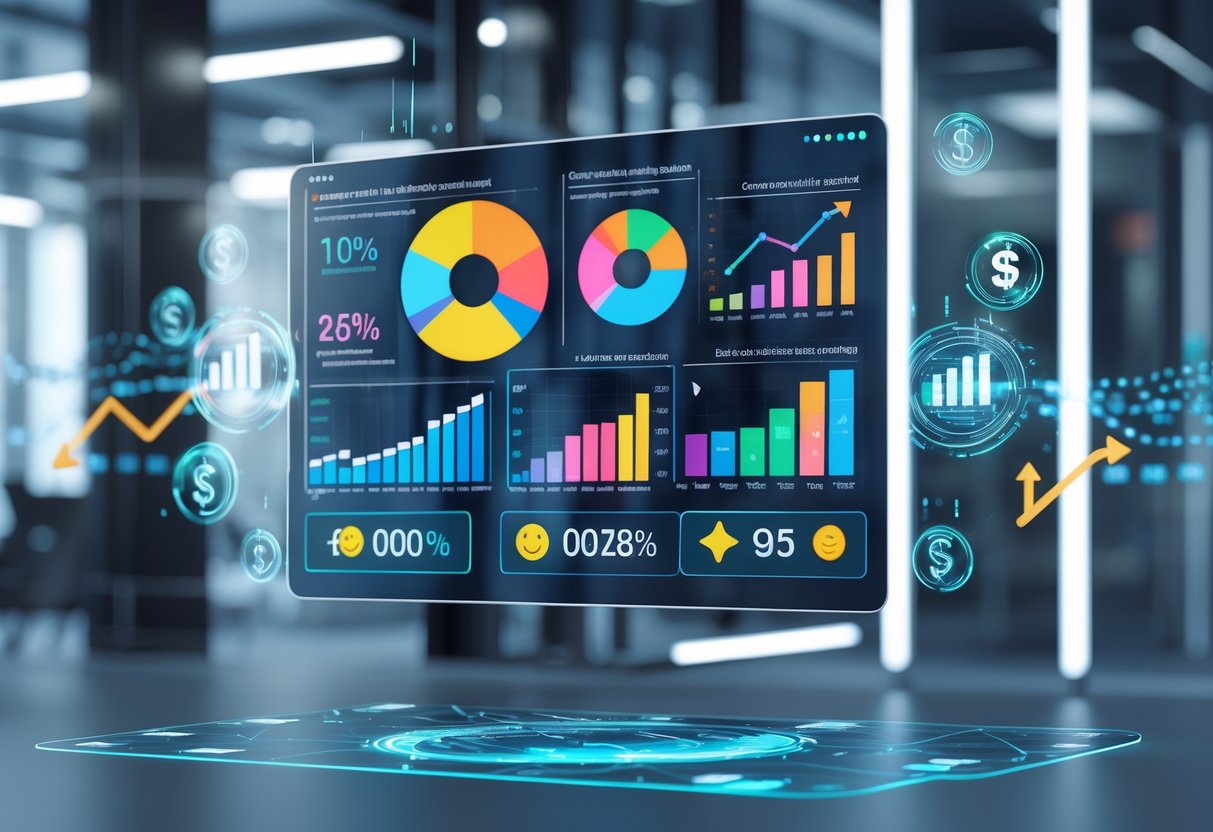
Customer feedback offers real proof of how sponsorships affect brand perception. Net Promoter Score shows if sponsorships actually boost loyalty and satisfaction.
Gathering and Analysing Feedback
We ask customers who interacted with our brand during the sponsorship for feedback. Satisfaction surveys work best if we send them within 48 hours of the event or activation.
Focus groups dig deeper into perceptions. We ask about brand recall, purchase intent, and whether the sponsorship changed their view of us.
Online monitoring keeps tabs on reviews and ratings across Google, Facebook, and Trustpilot. We compare feedback from before and after the sponsorship.
| Feedback Method | Timeline | Best For |
|---|---|---|
| Post-event surveys | 24-48 hours | Quick sentiment check |
| Focus groups | 1-2 weeks after | Deep insights |
| Online review tracking | Ongoing | Long-term perception |
Customer Satisfaction (CSAT) scores help us measure happiness with sponsorship activities. We track CSAT before, during, and after campaigns.
Net Promoter Score as a Sponsorship KPI
Net Promoter Score asks how likely customers are to recommend us. But let’s be honest—NPS isn’t always perfect for sponsorships.
A lot of people don’t really get the NPS scale. They might give us a 7, thinking it’s great, but that still counts as passive.
Sponsorship-specific NPS works better. We ask, “How likely are you to recommend [Brand] after seeing us at [Event/Partnership]?”
We track NPS in three phases:
- Baseline NPS before sponsorship starts
- During-event NPS for immediate effects
- Post-sponsorship NPS for long-term change
A good sponsorship usually brings a 10-15% NPS boost. We also split responses by attendees and non-attendees to see direct impact.
Competitor and Industry Benchmarking
Figuring out how your sponsorship stacks up against competitors and industry norms helps you make smarter calls and spot growth opportunities. Benchmarking comes down to two things: checking out what your rivals are doing and seeing how you measure up to the wider market.
Competitor Analysis Techniques
We look at how other brands handle similar sponsorships to see what works—and what doesn’t. First, find direct competitors who target the same people or sponsor similar events.
Research competitor partnerships with a plan. See which teams, events, or platforms they back. Track their activation styles, content, and engagement on social media.
Watch their sponsorship frequency and length. Some brands go for long-term deals, others just drop in for short bursts. That tells you a lot about their goals and budgets.
Check out their messaging and position. How do they show up in sponsorships? What values do they push? You might spot a gap or a way to stand out.
Track their public performance metrics. You won’t get their private ROI data, but you can see public engagement, social buzz, and media coverage.
Social listening tools let us monitor competitor mentions and sentiment during sponsored events. This way, we see what audiences respond to—and where we might do better.
Market Benchmarking
Industry benchmarks help you put your sponsorship performance in context and set expectations that actually make sense. Most sponsors aim for a 4:1 ROI as a baseline, or so the research suggests.
Set awareness benchmarks. Track how many engaged consumers recognize your brand and compare that to industry averages. This number can swing a lot, depending on the sport and the audience.
Check engagement rates across similar partnerships. Look at things like social media interactions, website traffic spikes, and conversion rates from other sponsorships in your sector.
Look at market pricing standards. Knowing what others pay for similar deals helps you negotiate and spot undervalued opportunities.
Dig into successful case studies. Find high-performing sponsorships in your industry. What made them work? Maybe you can borrow a page from their playbook.
Regular benchmarking shows whether bad results come from weak brand alignment, poor execution, or just unrealistic expectations. This data-driven approach helps you make smarter sponsorship decisions and chase better ROI.
Maximising Sponsorship Effectiveness
Smart sponsorships start with focused investment and clear goals. The best brands pick opportunities that fit their objectives and measure what really matters.
Optimising Sponsorship Investments
Let’s look past flashy proposals and focus on real engagement. Too many brands get distracted by big reach numbers, when the real value comes from audience depth.
Start with behavior-based metrics instead of just awareness. Find properties where people actually watch, follow, buy, and recommend. That’s a stronger foundation than passive exposure.
Try a three-step valuation:
- Size genuine engagement – measure real fan behavior.
- Anchor to market benchmarks – use consumer data for realistic pricing.
- Price individual assets – break down exactly what you’re buying.
Cost per impression and cost per contact tell you what you’re really getting. Separate working media spend from non-working stuff, like hospitality.
Watch out—properties sometimes exaggerate impression counts or use outdated ratios. They might charge based on what they hope to deliver, not what’s realistic.
The best brands blend their own sales data with third-party brand metrics. This gives you both hard results and softer benefits like brand equity.
Aligning Goals and Outcomes
Clear sponsorship goals make measurement way easier. You need to set specific targets before you sign anything.
Brand exposure goals could be logo visibility, social mentions, or broadcast time. Sales impact targets focus on revenue, lead generation, or conversions. Digital engagement tracks website traffic, social followers, or content interactions.
Set up tracking systems early. Many brands struggle because they try to measure everything after the campaign’s over. Get baseline data before you start.
Mix short-term and long-term objectives. Immediate sales are easy to track, but long-term loyalty often brings more value.
Check in regularly. Monthly reviews help you catch problems early and tweak your tactics. That way, you don’t waste money on stuff that’s not working.
Write everything down. Both sides need to know what success looks like and how you’ll measure it. This builds stronger relationships and better results.
Use consumer behavior data to double-check your assumptions. Sometimes what you think will work just doesn’t land with real audiences.
Common Pitfalls and Best Practices
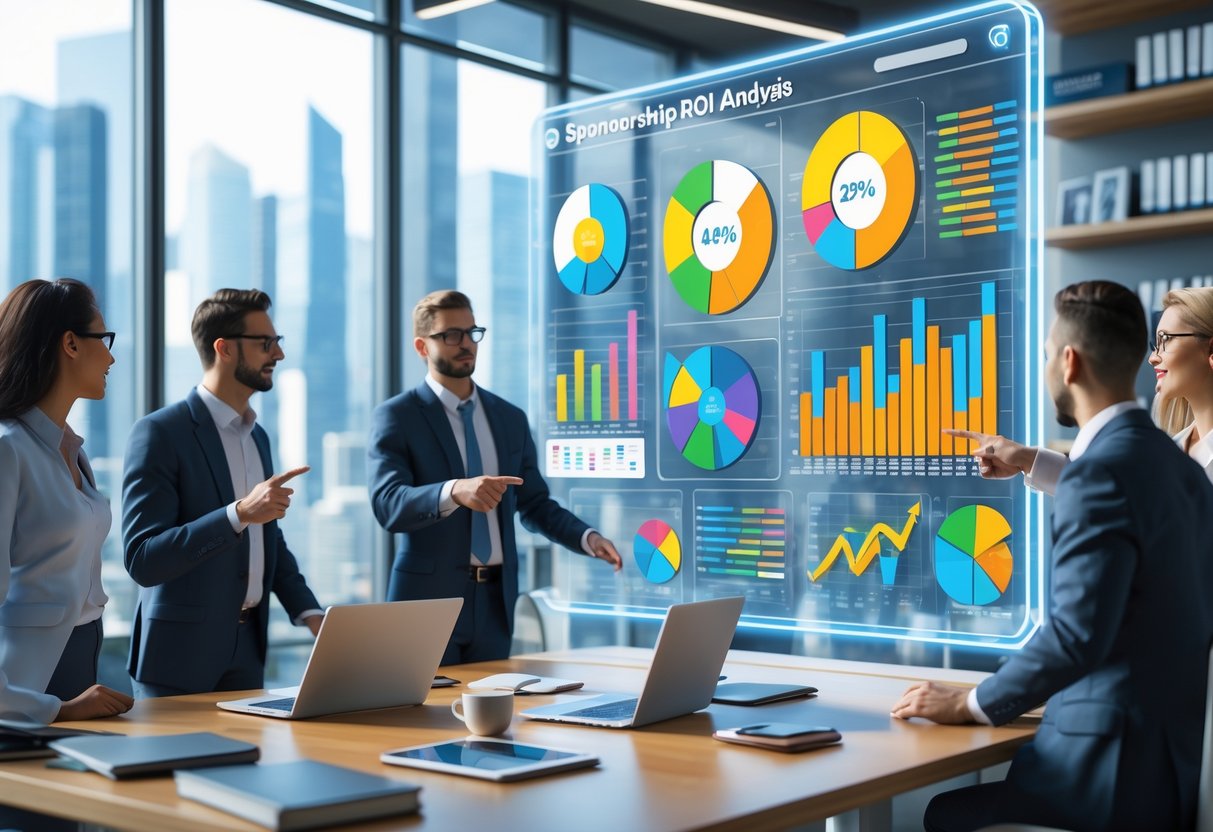
A lot of brands struggle to measure sponsorship success because they track the wrong things or ignore key data. The trick is to avoid calculation mistakes and build systems that actually show what matters for your goals.
Avoiding ROI Calculation Mistakes
Quick win: Set up baseline measurements before your sponsorship kicks off to track real changes.
One big mistake? Only measuring immediate results like impressions or clicks. Those numbers look good, but they don’t tell the whole story.
Sponsorships build brand awareness over months, not days. Someone might spot your logo at a gaming event but not buy your product for weeks.
Don’t just track:
- Social mentions
- Website clicks during events
- Immediate sales spikes
Instead, measure:
- Brand awareness before and after
- Customer lifetime value
- Long-term sales patterns in your target market
Another common error is forgetting about outside factors. If a competitor launches a campaign at the same time, their moves might skew your results.
Heads up: Brands sometimes blame bad sponsorship metrics on the partnership, when really, other marketing or market changes caused the shift.
Set goals before you start. If you want to reach young gamers, don’t just count impressions—track how many people aged 16-25 actually engaged with your brand.
Adopting Data-Driven Approaches
Gaming expert James Connolly points out that top esports sponsors combine lots of data sources instead of just one.
Connect your data—social analytics, website traffic, and sales should all work together.
Key data sources:
- Tournament broadcast metrics
- Social engagement rates
- Email sign-ups
- Direct sales attribution
- Brand sentiment tracking
Use tools that pull info together automatically. Manual spreadsheets usually miss connections between sponsorship activities.
Successful sponsors track both numbers and feelings. Quantitative data shows what happened, but qualitative research reveals why people cared.
In practice:
- Run surveys with event attendees
- Watch social media comments about your brand
- Track which gaming communities mention you most
Set up dashboards that update live during events. This lets you adjust while the sponsorship is happening, not just after.
Next: Pick three key sponsorship metrics that match your business goals and track them consistently across all partnerships.
Frequently Asked Questions

Measuring sponsorship ROI brings up a lot of practical questions—tracking, attribution, and avoiding expensive mistakes. Here are some answers to help you build a measurement system that actually works for your esports partnerships.
How can we effectively measure the return on investment from our sponsorship activities?
Start by setting clear goals before you sign any sponsorship deal. Define what success means for your brand.
Track both hard and soft metrics. Hard metrics are website traffic, sales, and lead generation. Soft metrics include brand awareness, social media mentions, and audience engagement.
Use tracking codes and unique URLs for every sponsorship. This shows you exactly which partnerships drive results. Promo codes for each esports event or team work well.
Set up conversion tracking on your site and tie it to your sponsorship timeline. You’ll see activity spikes during broadcasts or team announcements.
Survey your audience regularly. Ask how they found you. A lot of esports fans remember sponsor brands from favorite teams or events.
What are the key indicators to look out for when conducting an ROI analysis for sponsorships?
Website traffic bumps during sponsored events show immediate impact. Look for spikes that match tournament schedules or team news.
Social engagement reveals audience interest. Track mentions, hashtags, and user content tied to your sponsorship.
Brand awareness surveys show long-term value. Compare awareness before and after your campaigns.
Sales attribution connects revenue directly to sponsorship. Use tracking codes and customer surveys to tie purchases to specific deals.
Cost per impression helps you compare opportunities. Figure out how much you pay to reach each viewer across different esports properties.
Lead quality matters more than quantity. Track how many sponsorship-sourced leads actually become customers.
Could you suggest practical methods for tracking the success of sponsorship initiatives?
Custom landing pages work great for esports sponsorships. Create unique URLs for each event or team partnership. This tells you exactly where your traffic comes from.
Promo codes give you direct sales attribution. Make them catchy and tied to the esports property. Fans love exclusive codes from favorite teams.
Social listening tools track brand mentions everywhere. Set up alerts for your brand plus esports terms. You’ll catch conversations you’d otherwise miss.
Google Analytics campaigns let you tag all sponsorship traffic. Use UTM parameters to separate partnerships. You’ll see which events bring the best visitors.
Ask customers at checkout how they heard about you. Many will mention the esports team or event.
Email tracking shows engagement with sponsored content. Watch open and click rates for sponsorship-related campaigns.
What’s the best way to attribute sales or conversions to specific sponsorship efforts?
Multi-touch attribution paints the full picture. Track every step from first awareness to purchase. Esports fans often need to see your brand a few times before buying.
First-party data collection works best for accuracy. Use sign-up forms, surveys, and interviews. This data is yours and gives real insight.
Correlation analysis helps spot patterns. Look for sales increases that line up with your sponsorship timeline. Remember to account for other marketing running at the same time.
Customer journey mapping shows where sponsorships fit. Esports fans might discover you through sponsorships but buy later. Track those delayed conversions.
Control groups give you benchmarks. Test markets without sponsorships and compare results to sponsored ones.
Post-purchase surveys catch what tracking misses. Ask customers about their decision process. Many will mention the sponsored team or event.
Can you advise on the most common pitfalls to avoid when evaluating sponsorship ROI?
Don’t just trust reach numbers. Esports properties may inflate viewership. Focus on engagement and real audience behavior.
Avoid short measurement windows. Esports sponsorships build awareness over time. Measure results for at least 6-12 months after campaigns.
Don’t overlook indirect benefits. Being associated with popular teams creates long-term value, even if you don’t see it in immediate sales.
Stop using outdated metrics. Traditional advertising methods don’t capture esports audience behavior. Update your tracking for digital-native fans.
Don’t measure everything the same way. Tournament sponsorships and team partnerships need different metrics.
Always account for baseline activity. Separate sponsorship impact from your usual marketing. Use control periods to set accurate baselines.
What strategies are there to improve the impact of our sponsorship investments based on ROI findings?
Don’t just stick your logo everywhere—get creative with your sponsorships. Work directly with sponsored teams to make unique content. Try coming up with exclusive products just for esports fans.
Honestly, engagement wins out over passive exposure every time.
If you notice one partnership’s really working, lean into it. Put more resources behind the teams or tournaments that give you strong results. And if something’s not working? Don’t hesitate—cut those sponsorships fast.
Push for deals based on performance, not just flat fees. Tie your sponsorship spending to things like website visits or actual sales. That way, everyone’s on the same page about what success looks like.
Give fans something to talk about. Set up meet-and-greets with the players you sponsor. Maybe even run gaming tournaments for your own customers. These experiences tend to boost the value you get from your sponsorship.
Take the insights from your sponsorship data and use them elsewhere. The audience info you gather from esports can shape your broader marketing efforts. There’s a lot of valuable demographic and behavioral data hiding in those partnerships.
Stick with the properties that work for you, and don’t be afraid to go long-term. Multi-year deals can help you integrate more deeply and get more value. Plus, fans notice when brands keep showing up for their favorite teams—they tend to trust you more.

